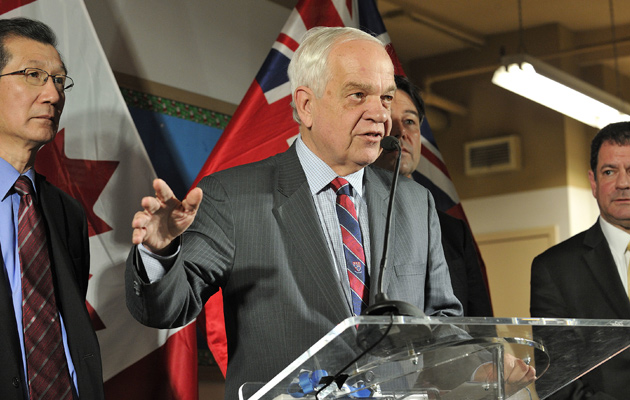El Ministro de Inmigración y Ciudadanía, John McCallum, anunció ayer este 2016 Canadá dará la bienvenida a un mayor número de inmigrantes: el Gobierno tiene un ambicioso plan para acoger entre 280,000 a 305,000 nuevos residentes permanentes canadienses.
“A medida que continuamos mostrando nuestro liderazgo global (en inmigración), Canadá reunirá a las familias, ofrecerá un lugar de refugio para aquellos que huyen de la persecución, y apoyará la prosperidad económica de Canadá a largo plazo”, señaló McCallum.
Asimismo, el Ministro de Inmigración destacó que el gobierno hará énfasis especial en la reunificación familiar. A través del Informe Anual al Parlamento sobre Inmigración, que incluye el plan anual de inmigración 2016, el gobierno describió la forma en la que aumentará los niveles de la reunificación familiar y se procesarán las aplicaciones con mayor rapidez.
El gobierno va a cumplir con sus compromisos de dar la bienvenida a más refugiados a Canadá, y en el proceso ayudará a diversificar la economía canadiense y crear un crecimiento sostenible.
2015 ANNUAL REPORT TO PARLIAMENT ON IMMIGRATION
Section 1: An Immigration System Grounded in Compassion and Economic Opportunity for All
Permanent Residence
Renewing and expanding a safe, secure and humane refugee program for Canada
- Reuniting Families:
- Immigration has always been important to Canada’s economic growth. Reuniting families helps immigrants build successful lives in Canada and contributes to the economic success of all Canadians. Reuniting families will be a top priority for the Government of Canada moving forward. To do so, investments will be made to family class processing. The Government will also seek to provide more opportunities for applicants who have Canadian siblings by giving additional points under the Express Entry system. The maximum age for dependent children will be increased to 22 from 19, allowing more Canadians and permanent residents to bring their children to Canada. The Government will also move towards granting immediate permanent residency to new spouses entering Canada, thereby eliminating the conditional two-year waiting period.
Canada’s Immigration Plan for 2016
Table 1 presents the 2016 levels plan, which outlines the anticipated number of permanent residents that will be admitted to Canada in 2016. The overall planned admission range is 280,000 to 305,000 people. The distribution among immigration programs is designed to support the Government of Canada’s priorities related to the accelerated resettlement of Syrian refugees and reunification of Canadians with their families, while also meeting economic objectives. The levels plan is informed by consultations with the provinces and territories, performance results, Government of Canada and departmental priorities, and operational capacities.

Section 2: Managing Permanent Immigration and Temporary Migration
Permanent Residents
The Government of Canada, in consultation with the provinces and territories, plans admissions of permanent residents each year in order to uphold the objectives for immigration as set out in the Immigration and Refugee Protection Act (IRPA). Permanent residents are persons who have been admitted to live in Canada on a permanent basis and who have the right to work and study in Canada, but have not become Canadian citizens. To maintain this status and not become inadmissible, they must continue to meet residency requirements and not violate the conditions of their status by reason of serious criminality, security, human or international rights violations, organized crime, or misrepresentation. As defined in IRPA, there are three basic classes of permanent residents: economic, family and refugees.
Section 5: Gender-Based Analysis of the Impact of the Immigration and Refugee Protection Act
Permanent Residents Highlights
IRCC has noticed a slight increase in the number of female principal applicants across economic programs. In 2014, the gap between male and female principal applicants was only 8,413, which represents a 61% decrease from 2004 where the difference was 21,629. This suggests that these programs are successfully recognizing the human capital of female immigrants. This is an important trend, and IRCC will continue to monitor its economic immigration programs to ensure that they welcome qualified men and women.

Family Category Observations
- Family Class
- Among spouses and partners, the largest category within the family class, there is a slight trend toward greater gender parity. In 2004, 64% of all spouses and partners were female. This proportion declined steadily over time, reaching 59% in 2014. Conversely, the number of male spouses and partners admitted through the family class increased from 36% in 2004 to 41% in 2014. This suggests that the increasing number of female principal applicants in the economic class may be having an influence on the gender balance of spousal sponsorship.
Fuente: Citizenship and Immigration Canada


